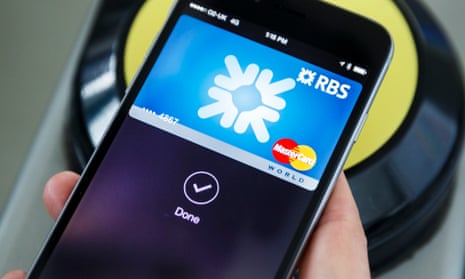Transport for London has warned tube, train and bus passengers paying with Apple Pay on iPhones and Apple Watches not to let their batteries run flat or they could get stuck at gates and face penalty fares.
TfL advises users that, as with other smartphone payment systems including EE’s Cash on Tap, Apple Pay only works if a device has power. It warns that, if the battery runs out in the middle of a journey, a user will not be able to tap out, which means they could be charged a maximum fare.
“If an inspector asks you to touch your iPhone or Apple Watch on their reader, it will not be able to be read and you could be liable for a penalty fare,” TfL says.
TfL also lists having both an iPhone and an Apple Watch as a potential issue – with a risk of being charged twice. It also warns that receiving a call while attempting to touch into or out of the gates will also cause issues, and that users with multiple cards on their account must remember to use the same one or potentially be charged twice.
For overseas travellers using Apple Pay, TfL warns it may not work and that users could be charged currency conversion fees.
Another problem with smartphone payment systems on public transport is the speed with which they operate. One of the biggest obstacles holding back contactless credit cards and smartphones with near-field communication chips from being used on the London Underground was the time it took for the system to authenticate the user and open the gates.
Oyster cards operate at sub-second times, which are faster than paper tickets and contactless cards. Apple Pay and other smartphone systems operate at a rate that is slightly slower than contactless cards, if they are pre-authorised.
For the iPhone that means selecting the correct card and having authenticated it with a fingerprint before touching it on the card reader, which has led to irate commuters and queues at the gates.
When you use Apple Pay on the underground but your sweaty post-tube fingerprint doesn't scan. Then the meltdown. AND THE SHAME. #neveragain
— Ryan (@goldblumr) July 15, 2015
Have to say apple pay is slower than contactless card due. Especially noticeable at tube barriers. Why touchID for small transactions?
— Stu Downes (@swdownes) July 15, 2015
I've tried Apple Pay on the tube a few times today and it is far too slow to thumb authorise. I feel i'll anger commuters.
— Glen Greer (@glen_g) July 15, 2015
And some resorting to using a card.
@charlesarthur at this moment in time card seems a better option there...
— Joe Asbridge (@joeasbridge) July 16, 2015
For Apple Pay users whose batteries do run out while on TfL, they might also be advised against trying to charge their phones on trains.

Comments (…)
Sign in or create your Guardian account to join the discussion